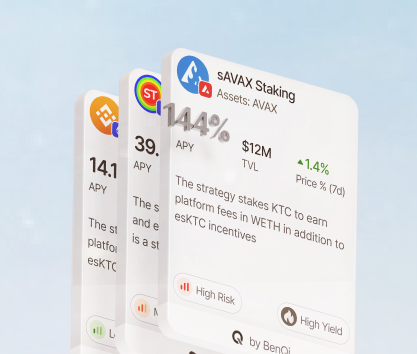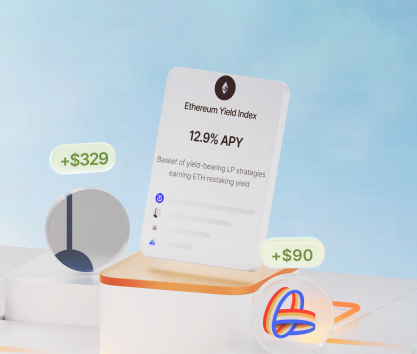Terra is an interesting project in the DeFi ecosystem. After the infamous collapse of the main native token of this layer 1 chain, many crypto enthusiasts turned their backs on it despite the best efforts of the development team. A few years after the whole debacle was mostly forgotten, Terra emerged again with a community-centric governance system and a more transparent development process.
While the network is far from its glory days, several projects are offering great investment opportunities to all users still interested in one of the most promising blockchains out there. The technology was always solid. The notorious founder Do Kwon wanted to create a new economic system independent of central authorities and institutions. However, the elastic money supply mechanism behind stablecoins deployed on the network was imperfect leading to a massive collapse of the flagship LUNA token since its value depended on the stability of the UST stablecoin.
Despite many hardships, the network is doing just fine with at least 50 different active protocols deployed directly on the network. The architecture is still the same. It uses Cosmos and is often referred to as the main DeFi hub for the whole ecosystem.
Terra rewards mechanisms explained
In 2022, the network was split into two separate forks. The Terra Luna 2 is the original network that remains operating as a centrally owned blockchain project. In January 2024, the company behind it Terraform Labs filed for Chapter 11 bankruptcy in the US. It was announced that the blockchain ledger will continue operating as it is, but the future of the classic version of the chain is still uncertain.
Terra Classic is a more robust project due to its fully decentralized governance. The issue is that the adoption rate is too slow for many developers to continue working on it. For example, the Cavern protocol, despite its advanced technology and interesting features, was abandoned by the founder in June 2024.
Both networks have interesting protocols that provide financial services but the community seems to be leaning toward Terra Classic. This trend will likely strengthen by the end of 2024 when Terra Luna’s bankruptcy situation is resolved in the US.
Yield farming rewards on Terra
Different types of protocols offer unique rewards based on the type of assets staked and the underlying chain. For instance, Astroport is a decentralized exchange that operates on several chains within the Cosmos ecosystem with rewards varying greatly depending on where you want to stake digital assets.
Here are several examples:
- Staking in the LUNA-USDC pool on Terra will yield 7.31% mixed APR and 1.61% ASTRO for a total of 8.91%. As of the time of writing, this particular pool had $170K in TVL. The biggest pool on Terra is ASTRO-USDC with a $540K TVL and 3.53% in ASTRO emission APR.
- You can get a variety of tokens when staking on Neutron. For instance, you can stake USDC-ATOMd for 0.5% ATOM and 0.37% in droplets. Note that these APR values are floating and may change depending on market circumstances. Staking in the USDC-NTRN pool yields 5.83% emission APR, 2.98% pool APR, and 27.99% NTRN APR for a total of 36.8%.
Interest rates depend on the popularity of the network, adoption rates, token prices, and many other factors. Utilization and available liquidity also play a huge role. Since Terra is slowly losing its market share, APR numbers may not impress you. However, it is still performing better than Osmosis or Sei.
Maximizing returns: Terra Classic and Terra 2
The most problematic part here is determining which blockchain to focus on. While the bankruptcy filing is concerning to many investors, the smooth transition from mostly centralized to fully decentralized governance demonstrated by The Open Network when it was abandoned by the Telegram team serves as evidence that the fate of the centralized institution behind the project does not necessarily affect its future.
Terra Classic shows that decentralization can be an effective tool and that the community behind a project is just as important as good leadership from a central authority. The quality of protocols on this network is excellent. However, it struggles to attract users and adoption rates are way too slow for some developers to keep working on slowly declining projects. In this particular sense, Terra Classic appears to be a sounder choice in the long term.
Terra’s financial opportunities
Whether you decide to focus on the Classic version or the community-run chain, you should follow relatively simple rules to create a sound investment plan. Protocols on Terra can have generous rewards but the token’s market performance should be taken into consideration.
Here are some guidelines for newcomers:
- Choose time-tested platforms. Terra is supported by multiple protocols that have already been established as reliable and trustworthy. Astroport is just one example with 737 pools focused on various digital assets native to the Terra chain. Just be aware of pools that are mostly abandoned and do not produce any yields. Also, check whether protocols are still working. For instance, you could still put assets into lending pools on Cavern in July 2024 despite the shutdown of the borrowing service.
- Focus on high-yield pools. Since both networks do not have a certain path forward and may collapse due to the lack of investor interest, we strongly suggest staking in pools with huge rewards and timing your exit properly instead of playing the long game. For instance, you can go to Coinhall and invest in the NIBI-USDC pool to receive up to 49% mixed APY including rewards in Osmosis tokens. OSMO is a token that struggles with inflation but recent prices have been higher compared to the same period in 2023. You can still try to cash out rewards for a hefty sum.
Use advanced instruments to amplify gains. Eris is an interesting protocol that offers a wide range of investment strategies including auto-compounding, reward incentives, liquidity pools, and more. An experienced investor can easily find something that will work for their particular portfolio. Conservative approaches include ARB vaults and liquidity incentives. You can stake a variety of tokens on the Terra blockchain using the Alliance system that allows users to invest in Terra, Carbon, ChiHuaHua, and Migaloo. The amplification system here is quite useful if you want to have a stronger portfolio that can outperform other investment options in the short term.
Yield farming strategies using Terra digital assets
Despite the decline in user activity, Terra ecosystems still have a lot of different digital assets that you can earn through rewards systems. Choosing the right type of tokens is extremely important if you plan to maximize profits. However, you should also remember about APRs which can represent mixed rewards that may consist of pool interest rates, emission APR, reward APR, and other forms of returns that together may give you huge gains.
We will cover several interesting approaches to investing digital assets in the Terra ecosystem. Many of these techniques will work well for other blockchains.
Strategies for yield farming
As of the time of writing, Terra has several DeFi protocols that reward users for their contributions to liquidity, lending, and other pools. The selection of investment instruments is quite diverse allowing users to create all sorts of strategies.
Below are some of investment systems and tips that will help you build a solid portfolio:
- Diversify positions. While it is often better to concentrate a position for better returns when it comes to high-yield pools, where an investor makes a bet that the price of the reward token will either remain stable or shoot up by the time an exit is planned, diversifying is a good idea. We strongly suggest selecting several pools that have explosive potential and investing a small sum in each.
- Select strategies based on risks. It is important to identify the dangers you expose yourself to. For instance, investing in pools with low TVL and high rewards can be very risky since you will face a variety of risks including sudden liquidation, insufficient liquidity, and market volatility. The ASTRO token lost over 70% of its value since launching in just a year. However, smart investors timed their exit around ATH and cashed out when the price was $0.327 which is 220% more than at the beginning.
- Pick protocols that operate on multiple chains. When it comes to working with digital tokens surrounded by an aura of uncertainty like Terra and its many digital assets, it is a good idea to work with protocols that allow you to explore a variety of options and quickly switch to other investment strategies if you yield farming plans do not work out as intended.
Terra ecosystem yield farming
Investment options for people who want to focus on yield farming exclusively are limited to Terra networks. Nevertheless, you can find a wide range of pools where it is possible to achieve high APYs without compromising safety. Let’s talk about several interesting projects that offer good rewards to users who are interested in yield farming.
- Astroport is a multi-chain decentralized exchange strongly focused on providing liquidity for transactions on chains like Terra, Neutron, Sei, Osmosis, and Injective. Rewards are paid in all sorts of tokens including native to the protocol ASTRO, chain tokens like OSMO or NTRN, and many others. Yield farmers should take note of pools like USDC-USDT with an 11.59% ASTRO emission APR or ROAR-LUNA with 48.4% mixed APR including 23.38% in ROAR rewards.
- Coinhall is another DEX that supports this chain and offers a wide range of pools with rewards in a variety of tokens including NTRN, OSMO, LUNA, and more. Note that Coinhall does not focus on rewards incentives and operates as a typical decentralized exchange paying liquidity pool contributors with a cut of their revenues.
Liquidity pools: Terra Luna and Luna 2.0
The variety of investment options on several platforms that still support Terra digital assets is limited compared to mainstream layer 1 blockchains like Ethereum, Polygon, or Solana. Nevertheless, you can still find a plethora of interesting pools to invest in. We only suggest you keep an eye on investments and time your exit properly to avoid losing money.
We will discuss several LUNA-based two-sided pools offered by the biggest protocols in terms of TVL. Coinhall and Astroport are the main destinations for investors. Let’s check out the offerings and interest rates that you can get on them.
Popular liquidity pools on Terra
These protocols have several large pools with TVL higher than $100K. While these are still much smaller compared to multi-million pools on other popular platforms, high interest rates may attract investors seeking exorbitant yields without any regard for risks.
Here are the options to explore:
- LUNA-USDC on Astroport. This pool has a combined mixed APR of 43.16% and over $100K in TVL with daily volumes ranging between $5K and $15K. You will be rewarded an ASTRO emission APR of 37.34% on top of a 5.82% pool APR. It is one of the best and most reliable pools out there due to the inclusion of a popular stablecoin in the pair guaranteeing at least some level of cash flow.
- ROAR-LUNA on Astroport. With a hefty $43K TVL and over 42% in mixed APR rewards, this pool is a great choice for those interested in the ROAR project as investors receive 22.45% in ROAR on top of 19.89% in mixed pool APR. LION DAO is a very active community of crypto enthusiasts, experts, and hopeful investors focused on promoting the ecosystem and building new tools for Terra.
- bLUNA-LUNA on Coinhall. This pool is powered by White Whale through the Migaloo blockchain. Low volumes and just 0.1% APR seem quite disappointing but it is still one of the biggest LUNA-based pools out there with consistent returns and the ability to quickly swap digital assets if you need liquidity on hands.









